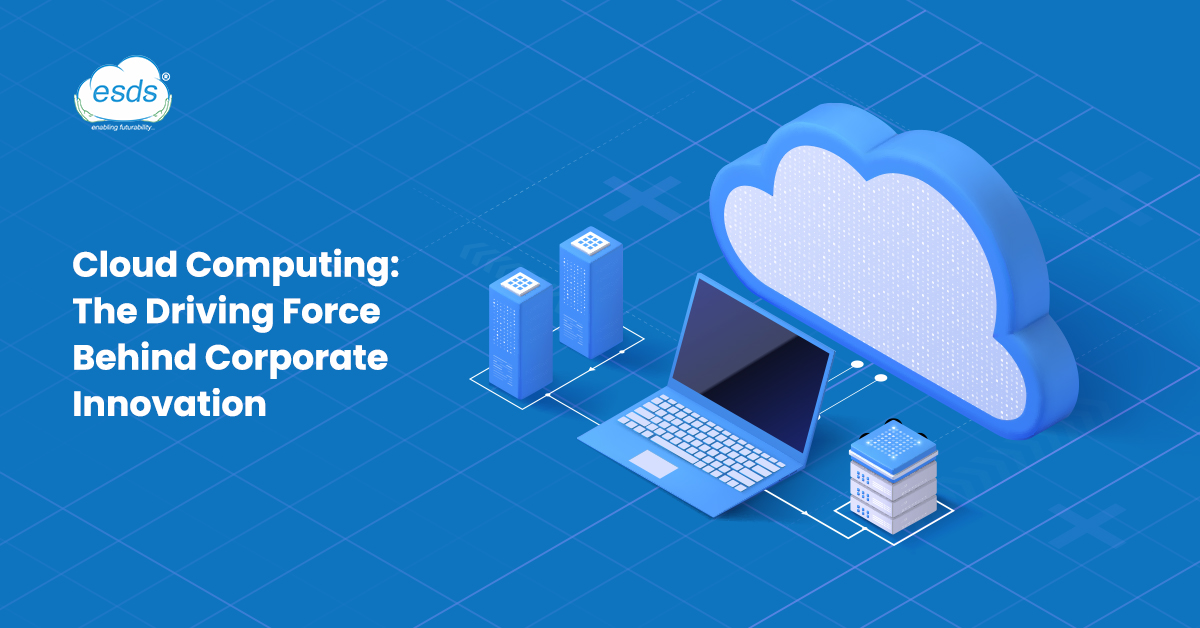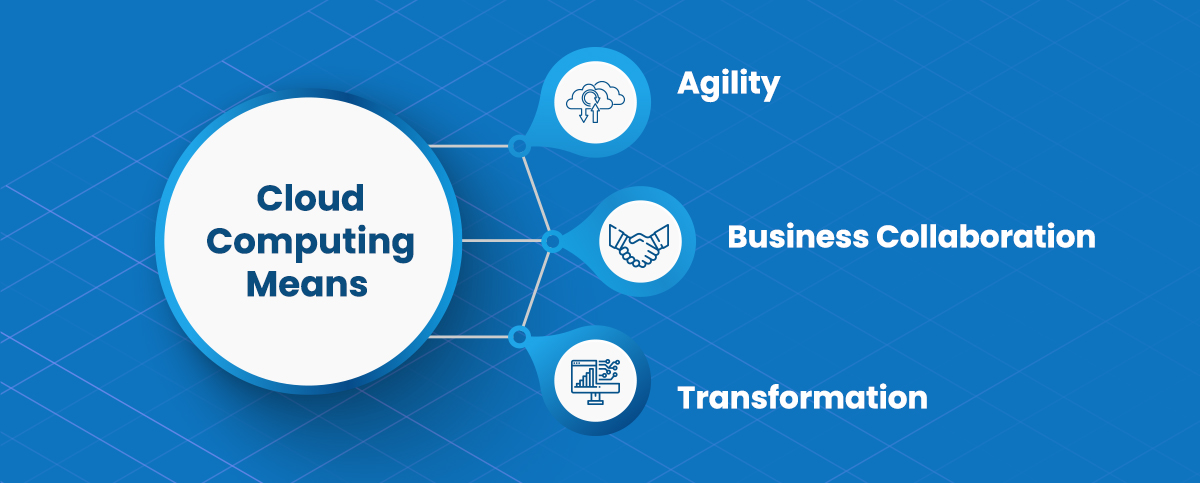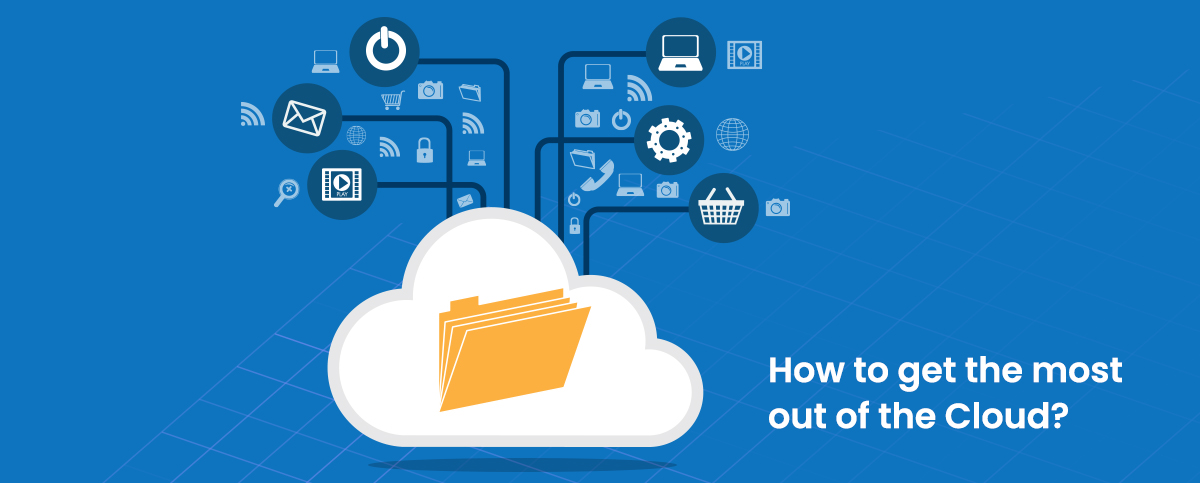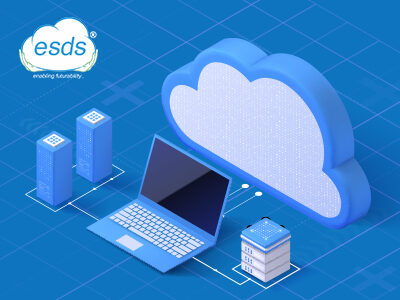Cloud Computing: The Driving Force Behind Corporate Innovation
Businesses today need to be more nimble and agile than ever due to the incredible rate of change. It is crucial to respond swiftly to new possibilities and disruptions without being constrained by historical limits. And a vital component of that agility is invention. It also catalyzes a more fundamental reinvention, in which a company changes what it does and how it does it in order to prosper in the digital age.

Cloud computing offers more than just better and more affordable IT infrastructure. Today, it serves as the main catalyst for business innovation. Why? Because it combines all of the components, you’ll need for innovation – data, people, partners, processes, and technology—on a single, simplified platform.
You may evaluate your data more thoroughly and develop insights quickly this way. It enables the creation of brand-new goods, services, and experiences by your own teams while also utilizing the inventiveness of others. It also gives rise to a plethora of fresh hyper-scale and third-party services from some of the world’s most brilliant brains.
Cloud Computing Means Agility
Cloud flexibility makes it possible for businesses to experiment. It lets you quickly spin up new environments, test out several concepts, and determine what is operating securely and quickly. This releases your business from the constraints of your legacy estate by reducing or eliminating technical debt.
It implies that you may make iterations more quickly, test out prototypes on demand, and obtain real-time data to guide business decisions. Cloud computing also allows the necessary responsiveness when the business needs to pivot quickly, such as in response to a global epidemic, allowing you to release new or updated products, services, and experiences with unheard-of speed.

Cloud Computing Means Business Collaboration
Cloud supports coworking, cocreation, and co-innovation inside and outside the enterprise. Cloud equals corporate collaboration. It strengthens ties with suppliers and partners while allowing employees to collaborate more effectively across multiple locations. It implies that you can collaborate with your partners to develop new business models, streamline supply chains, and securely share data.
Cloud Computing Means Transformation
A company’s value-creation process involves more than just its IT; it also affects people, processes, partners, and partners’ partners working together with technology. However, the agility and flexibility of the Cloud give it the perfect foundation for rethinking how the company operates and what type of value it generates for its clients. With the help of a cloud journey, legacy inefficiencies, duplication, unnecessary customization, and segregated working practices may be exposed and eliminated, allowing the organization to focus on customer results.
Embrace Cloud Computing capabilities: Data and AI
Data power nearly all modern corporate innovation. Additionally, employing advanced data science, the Cloud is the ideal platform for swiftly accessing your data and generating fresh insights. Almost any firm may now use advanced analytics and machine learning because they are offered as a service in the Cloud.
Additionally, cloud computing enables you to combine a lot more data, including potentially important unstructured or unlabelled data previously hidden or challenging to use (such as unstructured notes from call center interactions). Then, because the Cloud can scale up and down, it is far more efficient to run AI models that need powerful bursts of processing power while mining that data for insights.
The Cloud’s data-driven reinvention formula: what is it? Ensuring that it is identical to the business strategy. You should concentrate on the essential data components and top-priority use cases that will have the biggest influence on the business and correspond with the organization’s overarching objectives.
Embrace Cloud Computing capabilities: Connected devices
The Internet of Things, or “IoT,” is a network of interconnected gadgets that offers enormous potential for cloud-based innovation. If you have devices continuously streaming data to the Cloud for sophisticated analysis, regardless of whether your business consists of manufacturing production lines, medical devices, logistics and supply chain nodes, or retail outlets, you may rapidly produce breakthrough insights.
Additionally, with the innovation of hyperscalers, the Cloud is constantly being modified, evolved, and expanded. Additionally, edge computing promises unmatched data protection, management, and reduced latency and expense. This is especially useful in instances where data privacy regulations or the cost of data transfer previously made Cloud innovation impractical or prohibitively expensive.
Embrace Cloud Computing capabilities: The business ecosystem
Innovating in the Cloud involves more than just what your company does; it also entails creating new opportunities by collaborating with others. You have a quick and low-risk approach to profit from other people’s creativity with cutting-edge technology, thanks to how simple it is to embrace new services in the Cloud, both from your selected hyperscaler and from third parties. To get a sense of the possibility, look at the vast diversity of sector-specific services the hyperscalers are introducing each month.
However, using the Cloud makes it much simpler to cooperate and co-innovate with your partners and peers. That goes well beyond just holding meetings using videoconferencing tools.
Consider the shipping and supply chain procedures. On average, 20 separate documents are required to move a product from the point of manufacture to the end of consumption. Each of these documents must be compared as they move from manufacturer to logistics provider to the retailer, which adds time and money to the process. Every link in the supply chain can access data when it is stored in a cloud environment with the proper security and access controls, opening the door to a potentially radical streamlining of supply chain management.
How to get the most out of the Cloud?

- Know your destination
Understanding the broader picture and having a north-star vision for a cloud innovation program to provide motivation and purpose is crucial.
- Innovation is a chance for everyone.
Gaining the most benefit from cloud innovation must be a top priority for the entire firm, not simply an IT undertaking.
- Don’t try to get there all at once
It may seem far away to reach that north star. Consider segmenting the innovation journey into a number of more manageable, smaller projects.
- Leverage hyper-scaler innovation
Large sums of money are invested by hyperscalers in new services, industrializing both established ones like networking and cutting-edge ones like quantum computing.
- Innovation is not optional.
You run the danger of having your projects ignored and failing at scale if you see innovation as something that happens outside the core organization.
Cloud Computing: The driving force behind corporate innovation
Today, leaders across all sectors have similar goals- strengthening resilience, outwitting unpredictability, developing novel experiences and products, boosting trust, quickening response times, and saving structural costs.
The company must have the ability to seize possibilities for expansion and reinvention as soon as they present themselves in order to achieve that. To develop, explore, and scale up ideas that will drive growth not just today but also in the future, your people need the time, space, and resources.
Enterprises can move away from “keep the lights on” operations thanks to the Cloud’s speed and collaboration with cloud hyperscalers and other service providers. This frees up their budgets and teams’ time to completely rethink how the business runs and how it creates value. The ultimate goal of a cloud journey is to build a foundation for future business reinvention, creativity, and agility.
- Top 5 Data Center Trends for 2024 - October 11, 2023
- Top 15 Cloud Computing Trends 2024 - October 4, 2023
- What is Infrastructure Monitoring and Why Infrastructure Monitoring Tool is Important for Your Business? - September 20, 2023
